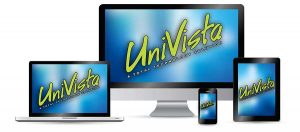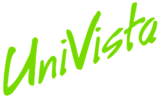
![]()
IT ASSET MANAGEMENT
Whether your organization has returned to work in-office full time, or like your UniVista team, are taking a hybrid approach with both from-home and from-office work, IT Asset Management requirements continue to be an increasing issue which will require an organizational strategy, tracking protocols and employee policies.
Essentially, IT Asset Management is the process of ensuring an organizations technology assets are not only properly accounted for, but also appropriately deployed, maintained, and ultimately disposed of. They include both tangible and intangible valuable items within an organization that are being tracked and used including both hardware and software. However, not only should an organizations computers and software licensed be tracked, but also items like tablets, cell phones, monitors, docks, etc. should be included, as well.
Prior to the work-from-home phenomenon, most organizations were able to track their assets within their own environment as a limited number of their employees were working from home. However, those organizations with an extensive number of employees in the field, for example police officers, or outside sale representatives, have always had a broader requirement for managing their assets and keeping them secure. Having strong Asset Management policies helps an organization determine what is available, what condition it’s in and what they may need to budget for in the future. Good Asset Management protocols help maintain order, eliminates potential wasted productivity, and keeps the individual end-users accountable.
A tremendous benefit to good Asset Management is its ability to save an organization money. It helps avoid unnecessary purchases, including unnecessary software licensing and support costs. Additionally, better control enforces compliance with security and legal policies and reduces an organization’s risks.
IT Asset Management can be a challenge even for the smallest of organizations. Keeping track of laptops and other mobile devices can quickly become overwhelming, particularly if items are lost, stolen or simply “disappear”. Many companies employ Asset Management Software to help manage their ever changing amount of hardware and software, and there are a variety of types on the market (See PC Magazine’s List of Top Asset Management Programs: https://www.pcmag.com/picks/the-best-it-asset-management-software) . However, Asset Management is only half the battle, the other issue is the need to keep those items up-to-date and, most importantly, secure.

ASSET MANAGEMENT AND MOBILE DEVICE MANAGEMENT
As company assets like laptops, tablets, cell phones and the like go out in the field or home with employees, there is always a chance for those items to be lost or stolen. All too often those items contain sensitive information which needs to be kept private and secure. Fortunately, there are security programs to help in this scenario in the form of Mobile Device Managers.
A Mobile Device Manager is a type of security software used to monitor, manage, and secure employees’ mobile devices. In most cases a Mobile Device Manager can be deployed across multiple mobile service providers and across the multiple mobile operating systems used with an organization. Mobile Device Management can be a last line of cybersecurity defense for an organization.
One of the most helpful aspects of a Mobile Device Manager is that it can help an employer not only track an asset in the field, but also, if necessary, send a signal to wipe it clean. Additionally, a Mobile Device Manager can restrict what a user can install on a phone, tablet, or laptop and most importantly, it can protect sensitive information with encryption, along with password and multi-factor authentication requirements. As an added feature, it can also monitor an employee’s productivity and location, should that be required.
If you’re unsure if you’re using the most up-to-date and secure solutions to manage your technology, our UniVista team is happy to discuss your asset and mobile device management requirements. If you have any questions or concerns about the safety and security of your organization’s devices, please don’t hesitate to contact your account representative.

